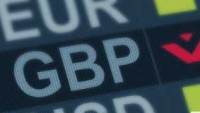 After a decent start to the week European equity markets stumbled badly yesterday, losing most of their gains for this week and selling off sharply, as economic uncertainty about future growth prospects continues to grow amongst some pretty high profile investors.
After a decent start to the week European equity markets stumbled badly yesterday, losing most of their gains for this week and selling off sharply, as economic uncertainty about future growth prospects continues to grow amongst some pretty high profile investors.
Yesterday we got a stark warning from ECB President Mario Draghi that unless politicians didn’t start addressing the problems in their respective economies then there would be lasting economic consequences resulting in years of weak output and stagnation.
The resultant sell-off in equities saw another rally in German bunds and UK gilts which sent yields in both to record lows, and German bunds in particular to within touching distance of negative territory. A move into negative territory for German bunds in the coming days would mean that investors would be paying to lend money to the German government all the way out to ten years, in the same way they currently are for Japan now.
Who would have thought that even possible even a year ago, investors paying governments to own their debt?
The record low yield on UK gilts was even more surprising given concerns about the upcoming Brexit vote, it appears that investors have little concern about the risks of owning UK government bonds ahead of this month’s vote, despite the prospect of an “out” vote, in just under two weeks’ time.
Mr Draghi’s comments were notable in so much for their frankness doubling down on the structural reform theme, something that he has repeated ad nauseam at pretty much every single press conference during his tenure, urging politicians to start delivering on that part of the process.
The impression he gave was that he is becoming increasingly concerned that the ECB is working at the extremes of its mandate, something the ECB is already being criticised for, and that he could struggle to get agreement to implement further policy measures in the absence of a willingness on the part of politicians to do their part.
The weakness in equity markets wasn’t helped by a rebound in the US dollar, which helped pull oil and copper prices lower. The fact that we got a selloff in oil prices shouldn’t have been too much of a surprise given the gains seen this week, but the rebound in the US dollar index does suggest we might be about to see a bit of a rebound here after the weakness seen in recent days.
If this US dollar strength continues it may act as a brake on the recent rise in oil prices, despite concerns about supply disruptions, which are currently helping underpin prices.
Gold prices look set for their best two week run of gains since January as the prospect of further delays in US Fed tightening and safe haven buying help underpin prices.
On the data front it’s a fairly low key day but we do have the final German CPI number for May which is expected to come in at 0.1%, while Bundesbank chief Jens Weidmann is due to give a speech at 8am BST.
In the UK we also get the latest construction output numbers for April which after the really good manufacturing data seen earlier this week, it is hoped will see a similar positive rebound after a 3.6% decline in March.
EURUSD – we saw a sharp key day reversal yesterday, after failing at the 1.1400 area which could see a move back towards the 200 day MA at 1.1090, and trend line support from the December lows.
GBPUSD – this week’s move failure at the 1.4660 area could well see move back towards the May lows at 1.4330, and trend line support at 1.4300 from the lows this year. We need to see a move back above 1.4520 to stabilise. It looks like we remain stuck in the broader range between resistance at 1.4700 and the recent May lows at 1.4330.
EURGBP – continues to look soggy while below the main resistance just above the 0.7900 level area at the May highs and 200 week MA at 0.7930. While below here the downside bias remains towards 0.7760. A fall back below 0.7720 retargets the 0.7640 area.
USDJPY – the failure to push below key support at the 106.30 area has prompted a rebound but we really need to push back through the 108.50 area to stabilise, otherwise it remains looks vulnerable to a retest of the 105.50 lows.













